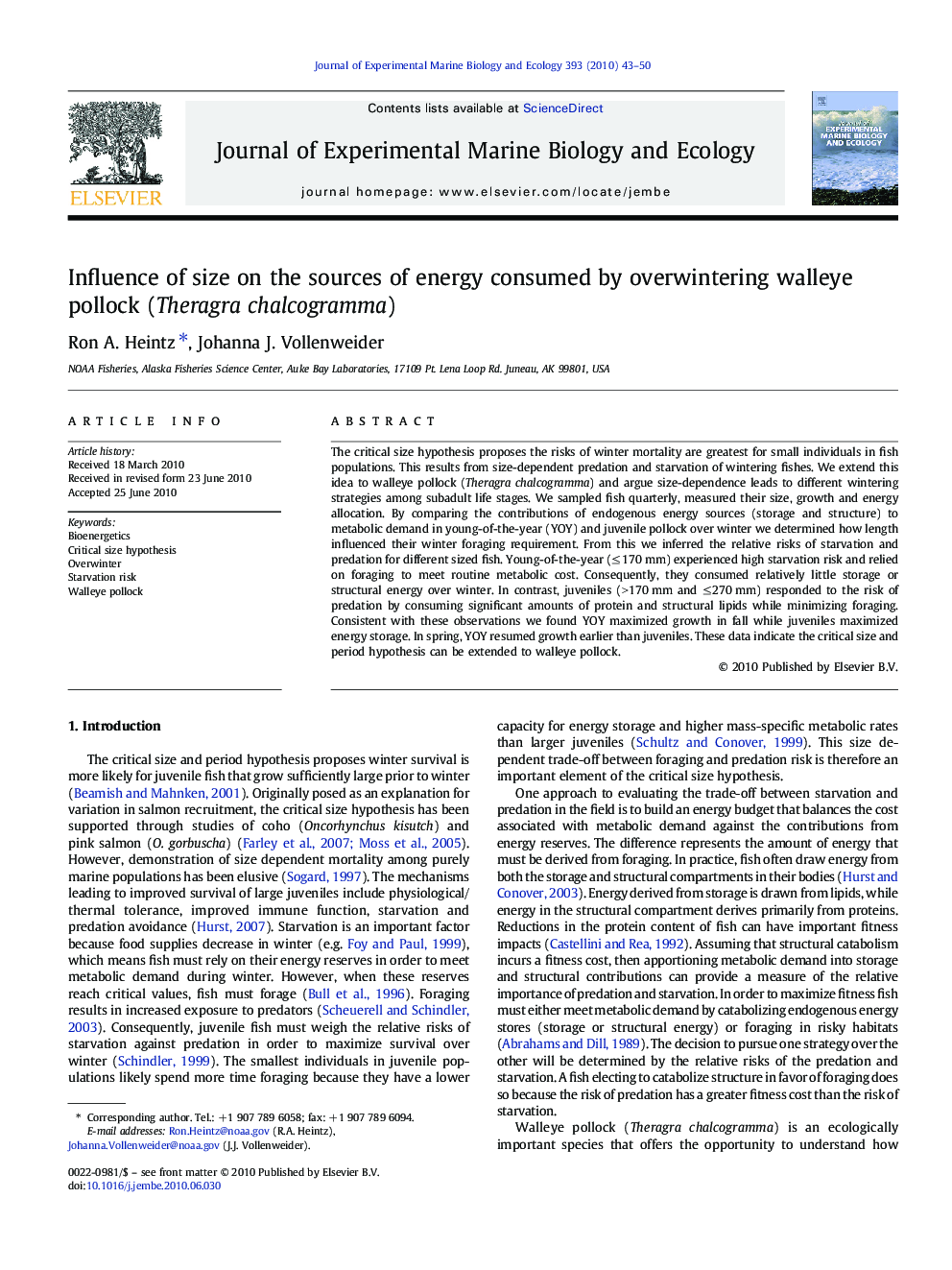| Article ID | Journal | Published Year | Pages | File Type |
|---|---|---|---|---|
| 4396457 | Journal of Experimental Marine Biology and Ecology | 2010 | 8 Pages |
The critical size hypothesis proposes the risks of winter mortality are greatest for small individuals in fish populations. This results from size-dependent predation and starvation of wintering fishes. We extend this idea to walleye pollock (Theragra chalcogramma) and argue size-dependence leads to different wintering strategies among subadult life stages. We sampled fish quarterly, measured their size, growth and energy allocation. By comparing the contributions of endogenous energy sources (storage and structure) to metabolic demand in young-of-the-year (YOY) and juvenile pollock over winter we determined how length influenced their winter foraging requirement. From this we inferred the relative risks of starvation and predation for different sized fish. Young-of-the-year (≤ 170 mm) experienced high starvation risk and relied on foraging to meet routine metabolic cost. Consequently, they consumed relatively little storage or structural energy over winter. In contrast, juveniles (> 170 mm and ≤ 270 mm) responded to the risk of predation by consuming significant amounts of protein and structural lipids while minimizing foraging. Consistent with these observations we found YOY maximized growth in fall while juveniles maximized energy storage. In spring, YOY resumed growth earlier than juveniles. These data indicate the critical size and period hypothesis can be extended to walleye pollock.
